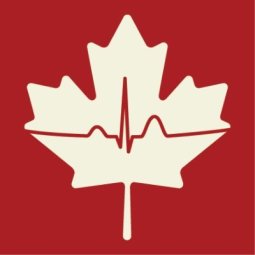Mitchell J. Effects of physician-owned limited-service hospitals: Evidence from Arizona. Health Affairs (2005). doi: 10.1377/hlthaff.w5.481
Background
Single-specialty physician owned hospitals (POHs) are commonplace in the United States, where there are about 270 such hospitals. Advocates for POHs assert that these hospitals, which typically offer a narrow specialty service such as orthopedics or cardiology, provide greater efficiency and quality than hospitals not owned by physicians. This study, however, suggests that physician-owners tend to treat mostly well-insured patients with low comorbidity, and perform more unnecessary procedures than non-owners. In this e-round, we examine how the practice patterns of physician-owners of limited-service cardiac hospitals differ from the patterns of physician-non-owners who treat patients at competing full-service community hospitals.
Methods and Limitations
The study examined cases treated during the six-year interval of 1998-2003 at two physician-owned limited-service hospitals specializing in cardiac services as compared to four nearby full-service community hospitals with substantial cardiac care programs. Physician owners and non-owners were identified for each treated case. For each physician, the researcher examined three aspects of practice: volume of cases, severity of cases, and type of insurance.
The study was limited by the fact that Arizona, like many states, does not require physicians to disclose ownership interests in limited-service hospitals. As a result, the researchers had to develop a complex methodology to identify physician owners and non-owners. Sensitivity analysis of this methodology, however, erred on the conservative side so this likelihood of misclassification was small. The study was further limited to inpatient cardiac cases, though this limitation is not likely significant since limited-service cardiac hospitals derive 85% of their revenues from inpatient cases. Lastly, since the results are all based on cardiac services, the study results may, or may not, apply to other types of physician-owned limited-service hospitals.
Results and Analysis
Physician-owners had striking differences in practice profiles compared with physician-non-owners. In terms of case volume, physician owners of limited-service cardiac hospitals treated higher volumes of profitable cases than did non-physician owners treating patients at competing full-service community hospitals. Physician owners treated more cases classified as minor in severity, whereas non-owners treated more classified as moderate or major in severity. Among both surgical and medical cases, physician-owners had a significant tendency to treat patients with fewer comorbidities, compared with non-owners who were more likely to have cases with four or more comorbid conditions. Regardless of whether measured case-mix was measured by severity-of-illness class or by a count of comorbid conditions, the results consistently showed that the caseloads of physician owners are low-acuity patients.
In the analysis of payer mix, physician-owners were significantly more likely to treat cases with more generous insurance reimbursement, and physician non-owners were more likely to treat those with less generous insurance.
Comment
Policymakers in the United States have long recognized the liabilities of physician hospital ownership. The Patient Protection and Affordable Care Act, popularly known as Obamacare, created restrictions on Medicare funding for physician-owned hospitals. Under the law, existing POHs are unable to expand and none that opens after 2010 is eligible for payment from federal health programs such as Medicare and Medicaid. Pete Stark, a Democratic member of Congress, said in the New York Times (December 12, 2011), “These facilities have caused patient deaths and are proven to increase unnecessary utilization, thus increasing costs.” The US Congressional Budget Office estimates that allowing the spread and expansion of doctor-owned hospitals would increase federal spending by $300 million over 10 years.
Despite compelling U.S. evidence of: 1) “cherry-picking” healthier and wealthier patients; 2) over-treatment; and 3) higher costs, physician-owned clinics and surgical facilities are being considered by some Canadian policymakers as one approach to increasing the “factory model” of out-of-hospital care. In a non-profit setting coupled with public financing, this approach may not be unreasonable; but this paper adds to an already substantial body of U.S. evidence demonstrating that in for-profit settings coupled with differing rates of private payment and/or competing community hospitals, physician-owned single specialty hospitals are likely to have problematic system-level consequences.
